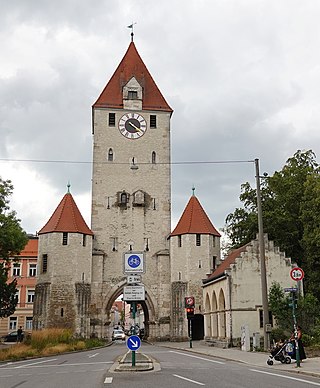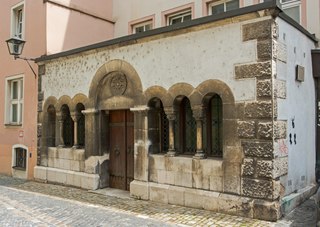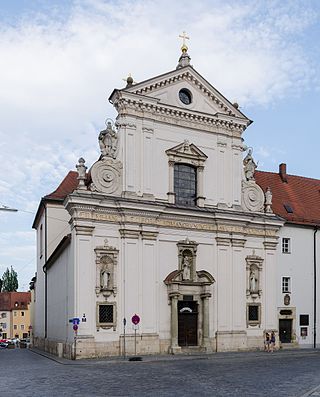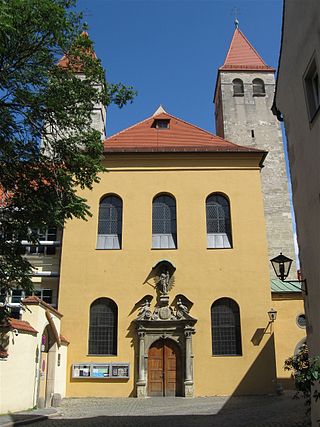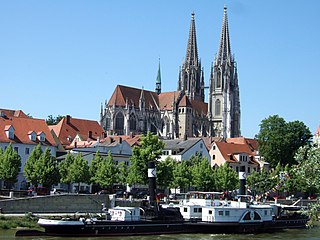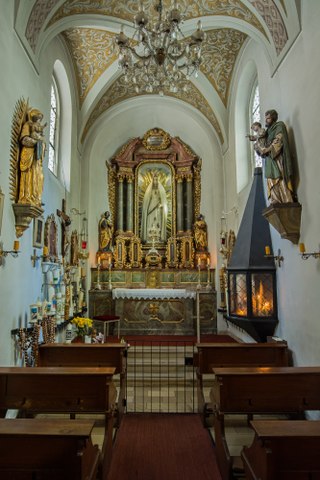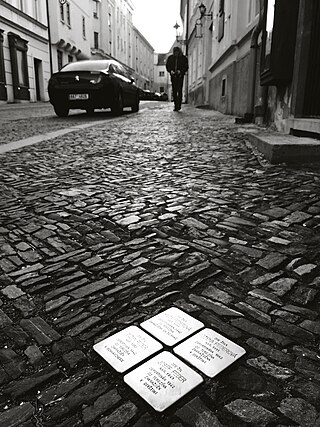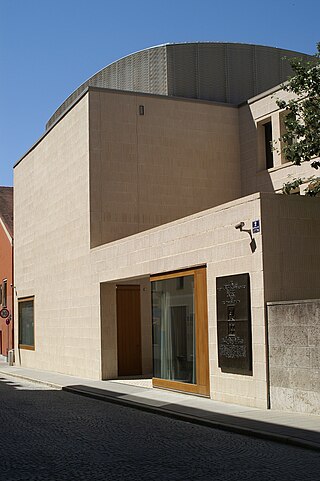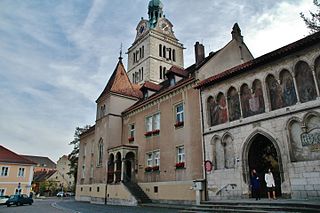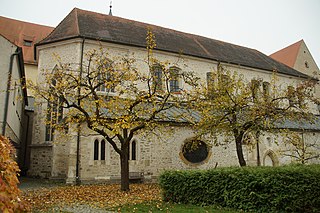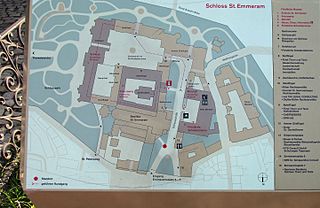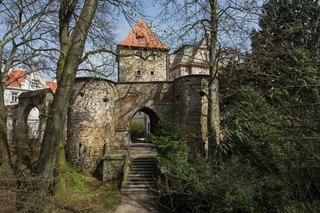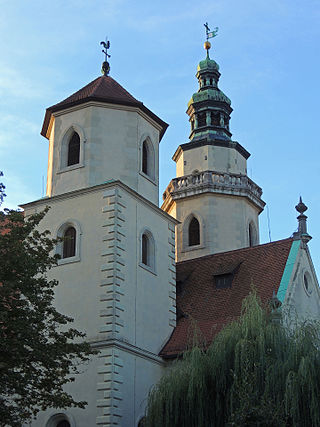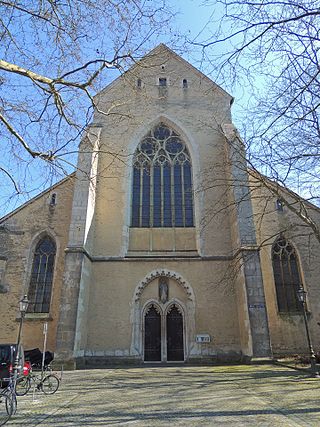Self-guided Sightseeing Tour #2 in Regensburg, Germany
Legend
Guided Free Walking Tours
Book free guided walking tours in Regensburg.
Guided Sightseeing Tours
Book guided sightseeing tours and activities in Regensburg.
Tour Facts
6.5 km
71 m
Experience Regensburg in Germany in a whole new way with our free self-guided sightseeing tour. This site not only offers you practical information and insider tips, but also a rich variety of activities and sights you shouldn't miss. Whether you love art and culture, want to explore historical sites or simply want to experience the vibrant atmosphere of a lively city - you'll find everything you need for your personal adventure here.
Activities in RegensburgIndividual Sights in RegensburgSight 1: St. Cäcilia
The listed Catholic parish church of St. Cecilia is located at Reichsstraße 12 in the eastern quarter of Regensburg.
Sight 2: Ostentor
The medieval east gate, built from 1284 onwards, at the eastern end of today's Ostengasse closes the old town of Regensburg and opens the arterial road to the west, today's Adolf-Schmetzer-Straße. The Osttor Tower was one of six gate towers of the former city fortifications and was built to protect the then so-called "Ostenvorstadt". The gate was built over the arterial road leading east to Vienna and was thus the city gate through which the respective emperor coming from Vienna on the Danube entered the city. The five-storey Gothic, representative tower building was erected by members of the Regensburg Cathedral Workshop, according to stonemason's marks found, and is one of the best-preserved Gothic city gate towers in Germany.
Sight 3: Minoritenkirche
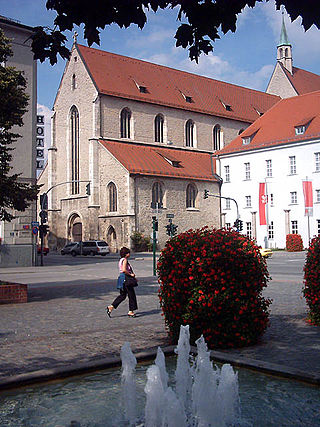
The Franciscan Monastery of St. Salvator Regensburg is a former Franciscan monastery in Regensburg in the Diocese of Regensburg.
Sight 4: Erhardikapelle
The Roman Catholic, listed Erhardi Chapel is located in the Erhardigasse of Regensburg. It is assigned to the Diocese of Regensburg. The building is registered as an architectural monument in the Bavarian List of Monuments under the monument number D-3-62-000-38301.
Sight 5: Karmelitenkirche Sankt Joseph
The Carmelite Church of St. Joseph on the Alter Kornmarkt in the old town of Regensburg is the monastery church of the convent of St. Joseph of the Discalced Carmelites as well as the most important confession and worship church in Regensburg. The High Baroque church building with echoes of the Italian style was built between 1660 and 1673 according to the plans of a hitherto unknown architect. Carlo Lurago, Antonio Petrini or a student of Petrini are possible authors.
Sight 6: Stift zu Unserer Lieben Frau zur Alten Kapelle

The Basilica of the Nativity of Our Lady also Basilica of the Nativity of Our Lady to the Ancient Chapel or Alten Kapelle It is the oldest Catholic place of worship in Bavaria and one of the most important churches in the city of Regensburg, in the south of Germany.
Wikipedia: Basilica of the Nativity of Our Lady, Regensburg (EN), Website
Sight 7: document Niedermünster
Sight 8: Niedermünster
The Niedermünster Church in Regensburg, built around 1150 at the end of the Romanesque period and Baroque in the 17th century, was the church of the former canoness monastery of the Imperial Abbey of Niedermünster, which was dissolved in 1803 in the course of secularization in Bavaria. After the transfer of the buildings to the Kingdom of Bavaria in 1810, the Niedermünster Church has served as a cathedral parish church since 1824.
Sight 9: Herzogsturm
The Roman Tower in the old town of Regensburg dominates the cityscape at the Alter Kornmarkt with its massive block shape. The Romanesque residential tower belonged to the ducal palatinate and was connected to the neighbouring ducal court to the south by a walkable candle arch, which was removed in 1855 and reattached in 1937/40 in a simple form.
Sight 10: Museum Sankt Ulrich
The former cathedral parish church of St. Ulrich in Regensburg stands at a distance of a good 10 m southeast of Regensburg Cathedral on the cathedral square, which extends eastwards on its south side to the Herzogshof. The St. Ulrich's Church and the exhibitions in the church are now part of the Regensburg Diocesan Museums.
Sight 11: Saint Peter's Cathedral
Regensburg Cathedral, also known as St. Peter's Cathedral, is an example of important Gothic architecture within the German state of Bavaria. It is a landmark for the city of Regensburg, Germany, and the seat of the Catholic Diocese of Regensburg.
Sight 12: Maria Läng Kapelle
The Catholic chapel Maria Läng is a baroque hall building with a groin vault from 1675. The chapel is an old house chapel on the ground floor of a former canon's courtyard. It houses a figure of the Virgin Mary, which is supposed to represent St. Mary in her true length.
Sight 13: Neupfarrkirche

The Neupfarrkirche is a Protestant parish church on Neupfarrplatz in the old town of Regensburg. The construction of the church, originally planned as a Catholic pilgrimage church, began after the destruction of the Jewish quarter in 1519. The high income from the pilgrimage, which was initially stormy, was to be used to finance the construction of a large Catholic pilgrimage church. When it later became apparent with the decline in pilgrimage that the financing of the Catholic church building was no longer secured due to a lack of income, the construction of the church was stopped. The financing of the provisional completion of the church was negotiated between the two parties involved or interested parties and then taken over by the imperial city of Regensburg, which wanted to use the church as a new Protestant church after the introduction of the Reformation.
Sight 14: Goldener Turm
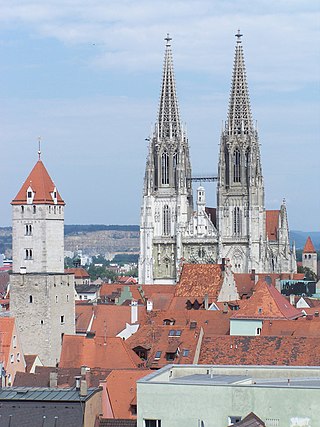
The Golden Tower at Wahlenstraße 14, in the old town of Regensburg, is one of the family towers that were built by rich patrician families in the Middle Ages as status symbols. It was built around 1250, but was only used to a limited extent as a residential tower in the 18th century. The tower was the highest house tower north of the Alps and became a landmark of Regensburg along with St. Peter's Cathedral and Steinerner Brücke.
Sight 15: Bella Ehrlich
A Stolperstein is a ten-centimetre (3.9 in) concrete cube bearing a brass plate inscribed with the name and life dates of victims of Nazi extermination or persecution. Literally, it means 'stumbling stone' and metaphorically 'stumbling block'.
Sight 16: Palais Löschenkohl
The Palais Löschenkohl is a baroque palace, Neupfarrplatz 14, in the World Heritage zone of the old town of Regensburg. It was built from 1730 to 1733 as a princely city palace for the family of the merchant and banker Hieronymus Löschkohl. After the bankruptcy of the banker Löschkohl, his escape and his death, the building served as the residence of the extended remaining family, who rented out many rooms in the building. From 1743 until the end of the Holy Roman Empire in 1806, the estate served as the residence of the delegation of the Electorate of Saxony to the Perpetual Reichstag. For this reason, the building was given the name Electoral Saxon Legation. The building is listed as a listed monument of Regensburg under the file number D-3-62-000-805.
Sight 17: St. Kassian
After the collegiate church in Regensburg, the parish church in Regensburg is the second oldest church in the city and is one of the most occupied church buildings in Bavaria. The listed church has a rich building history and was subject to changes in different epochs. Today the rococo style dominates in the interior and on the north facade. The church has been supported by our dear wife to the old chapel since 1225. With only around 65 Catholics, the St. Pfarrei St. Kassian is the smallest parish of the Diocese of Regensburg.
Sight 18: Jüdisches Gemeindezentrum
The Jewish Community Center with Synagogue Regensburg is the new community center of the "Jewish Community Regensburg". It was inaugurated on February 27, 2019, 80 years after the destruction of the New Synagogue and exactly 500 years after the expulsion of the Jews from the imperial city of Regensburg. It was built on the property "Am Brixener Hof 2", on which the New Synagogue stood until the pogrom of November 1938 and on which there was only a provisional community hall after the Second World War.
Wikipedia: Jüdisches Gemeindezentrum mit Synagoge Regensburg (DE)
Sight 19: Peterskirchlein

The so-called St. Peter's Church is located at D.-Martin-Luther-Straße 24 in the green spaces near Regensburg Central Station. The small church, built in 1806 as the cemetery church of St. Peter of the Catholic cemetery of the Lower Town, is now a Bulgarian Orthodox church.
Sight 20: Keplerdenkmal
Sight 21: St. Ignaz
The listed Bruderhauskirche St. Ignaz, the former Protestant hospital church, is located at Emmeramsplatz 12 in the old town of Regensburg. The church was built in 1622 from a predecessor chapel of St. Ignatius, which was created in 1444 after the foundation of the Bruderhaus Foundation for impoverished craftsmen.
Sight 22: Basilica Sankt Emmeram
St. Emmeram is a church building in Regensburg, begun around 780. The church was the main church of the monastery of St. Emmeram, which was elevated to a princely abbey in 1731. After secularization, the abbey church was made a parish church of the city of Regensburg and elevated to a basilica minor by Pope Paul VI on March 5, 1964 with the apostolic letter Terra sacra.
Sight 23: St. Rupert
The Church of St. Rupert is a church building, the former Roman Catholic parish church of the Imperial Abbey of St. Emmeram, on Emmeramsplatz in Regensburg, Germany. It is dedicated to St. Rupert of Salzburg.
Sight 24: Schloss St. Emmeram
The St. Emmeram Castle, also called Thurn and Taxis Castle, is a castle of the Fürstenhaus Thurn and Taxis in Regensburg. Today's castle was created by construction work at the end of the 19th century. In addition to new buildings, existing buildings of the former St. Emmeram monastery were also converted. During the secularization, the monastery buildings came to the Fürstenhaus of the Thurn and Taxis in 1803/1812. The castle is registered in the list of monuments in Regensburg Center and under the file number D-3-62-000-351 as a monument. "Archaeological findings and finds in the area of the former Benedictine abbey St. Emmeram, today Thurn and Taxis Castle, from the early Middle Ages to modern times" are also led as a ground monument under the file number D-3-6938-0820.
Sight 25: Emmeramer Tor
The New Emmeram Gate is one of the five surviving city gates of the medieval city fortifications of Regensburg, built around 1320. The well-preserved New Emmeram Gate replaced the Old Emmeram Gate of the Arnulfine City Wall built around 920, which was located at the southern end of the Obere Bachgasse further northeast at the curve of the city wall between Obermünster and Sankt Emmeram Monastery. Until 1907, when the neighbouring Helenentor was built and Helenenstraße was laid out, the Emmeramer Tor was an important access point for the population of Regensburg to the neighbouring farming village of Kumpfmühl, where vegetables were grown and flour was produced. Without this gateway, the village of Kumpfmühl would only have been accessible to the townspeople in a roundabout way, e.g. via the Jakobstor. In the 18th century, the gate offered easy access to the then newly created parks of Fürst-Anselm-Allee.
Sight 26: Dreieinigkeitskirche
The Trinity Church is a Protestant, early baroque, columnless hall church in the Ständenstraße, in the old town of Regensburg. The church was built from 1627 to 1631 according to Hanns Carl plans and was one of the first Evangelical Lutheran new church buildings in Bavaria. The church is considered the largest new church building of the then free imperial city of Regensburg; It is a popular destination for visitors because of the in the way over the old town. Another attraction is the southern churchyard accessible from the church. At the churchyard, after the end of the church building forced by Bavarian occupation troops and before the start of final construction work on the southern churchyard, during the Thirty Years' War, in the course of the fighting for Regensburg at the request of the Swedish army guide Bernhard von Sachsen-Weimar High Swedish officers and, at the request of some exulant families, also to some surrounding beds from Austria who had helped finance the construction of the Protestant Church. As usual, their original graves were outside the city walls and could therefore be looted by the enemy imperial-Bavarian troops.
Sight 27: Dominkanerkirche St. Blasius
The Dominican Church of St. Blasius with the former monastery buildings is located in the center of the western old town of Regensburg and is located on a large area that is separated from the Trinity Church by the alley Am Ölberg, which runs from north to south. The Dominican Church is located along the Predigergasse, which runs from east to west. The entrance to the Dominican Church is located on Albertus-Magnus-Platz in front of it, which merges into Bismarckplatz to the west. To the south, the former monastery buildings border on Ägidienplatz, which can be reached via Beraiterweg.
Wikipedia: Dominikanerkirche St. Blasius (Regensburg) (DE), Website
Sight 28: Volkssternwarte Regensburg
The Public Observatory Regensburg is an astronomical observatory located in Regensburg, Germany. Its history dates back to the year 1774 when Saint Emmeram's Abbey dedicated two towers to astronomical observations. For the most time, it served for educational purposes. Today it is run by a non-profit organization, the Verein der Freunde der Sternwarte Regensburg e.V.. The observatory is accessible for visitors on Friday evenings.
Sight 29: Dörnbergpark
The Dörnbergpark is a 7.4-hectare park, a little west of St. Emmeram Castle and the Helenentor, the exit from the old town of Regensburg. This important monument of 19th-century garden art is also only a little south of Bismarckplatz.
Share
How likely are you to recommend us?
Disclaimer Please be aware of your surroundings and do not enter private property. We are not liable for any damages that occur during the tours.
GPX-Download For navigation apps and GPS devices you can download the tour as a GPX file.

